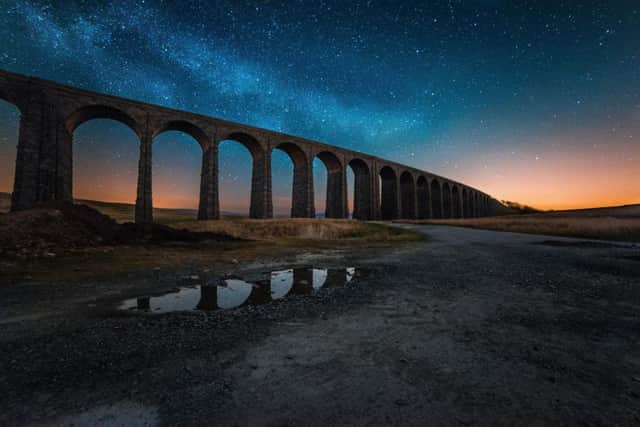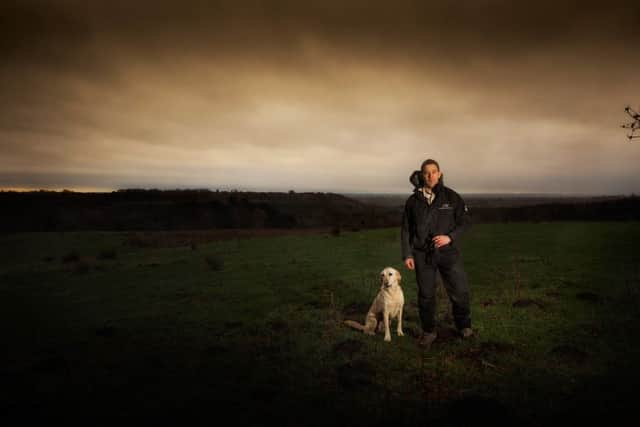Telescopes at the ready - new festival celebrates beauty of Yorkshire's night skies


However, as darkness falls it’s wolves and beavers that most people invariably want to talk about. The latter was successfully reintroduced in Scotland a couple of years ago and there are a growing number of environmentalists who are backing calls to bring back the wolf. The last recorded sighting in Britain was in the 1740s and while it’s unlikely they will ever reappear in Yorkshire it doesn’t stop people talking.
“If you were going to do it, you need somewhere very sparsely populated and where huge areas could be fenced off so that the populations could be controlled. That would be Scotland. Whatever people think about the conservation arguments, if we suddenly started hearing wolf cries in the dead of night in Yorkshire I’m not sure it would be terribly good for tourism.”
Advertisement
Hide AdAdvertisement
Hide AdAh yes, tourism. Visitors are key to the economic success of both the Moors and the Yorkshire Dales National Park. Over the last few years both have been working hard to find ever more inventive ways to get people to explore the landscape. The latest is the Dark Skies Festival. Beginning next weekend, the idea is to showcase Yorkshire’s countryside after dark, a time when most have headed either for their B&B or the road home.


“Because most of us live in towns or cities we rarely experience true darkness,” says Gareth. “Honestly there are some people who come on my walks who have never been in a forest before, let alone a forest at night. They do take some convincing that if they stand still for a few minutes their eyes will adjust. The truth is, we have become disconnected from nature. Go back 20 or 30 years and kids grew up building dens and they knew how to light fires. That happens less and less and while we are just a two-minute walk from the visitor centre, when night falls, your senses are heightened and it feels like you’re in the middle of nowhere.”
While Gareth, who will be running a number of twilight walks throughout the festival, is too wise to offer any guarantees, aside from the glow-worms and deer, he says that on a typical walk bats and tawny owls often make an appearance. When the wildlife does prove shy or deliberately elusive, there’s always the flora to talk about.
“The landscape tells a story, you just need to know what you’re looking at,” he says whizzing through a few thousand years of history in half an hour. “The landscape of Yorkshire, and much of the rest of Britain, was changed and managed by successive generations of farmers, but it’s the Victorians whose imprint can be clearly seen. It was they who introduced carefully landscaped gardens and it was they who introduced the beech tree, the rhododendron and a hundred other foreign species to Britain. Honestly, these trees tell the history of Britain.”
Advertisement
Hide AdAdvertisement
Hide AdBounding off down another boggy path with his dog Brodie, Gareth, who also works part-time for Forest Holidays which runs a number of sites across Yorkshire, is passionate about getting more people into the great outdoors and he hopes the festival will promote a different side to the Yorkshire countryside.


The event was born partly out of the success enjoyed by Northumberland National Park and Kielder Water and Forest Park after it was awarded Dark Sky Status two years ago. Visitor numbers have been steadily rising at the area’s main observatory and what’s known as astro-tourism is also on the up.
“Dark skies are one of Yorkshire’s real assets,” says amateur astronomer Richard Darn, who has helped to put together the festival programme. “But we have probably been a bit behind the curve in terms of promotion. There are some spots in Yorkshire which are just as dark as say Snowdonia, which also enjoys Dark Sky Status, and we just need to get that message out.”
The 2013 Star Count revealed that only five per cent of the UK population can see more than 31 stars on a good night, but if visitors can be persuaded to explore Yorkshire’s most remote parts it could well bring a tourism boost, particularly during the quieter autumn and winter seasons, when skies are at their darkest.
Advertisement
Hide AdAdvertisement
Hide Ad“There might be 64 million of us living on this small island, but the light pollution in Britain is nothing compared to somewhere like Germany,” says Darn, who will be hosting a number of star parties during the festival. “Programmes like Springwatch, which show footage of animals at night, and Stargazing Live have reawakened people’s interest in the night sky, but in many ways they have just shone a spotlight on something which was always there.


“There’s a tendency to think that amateur astronomers are all middle-aged men with beards and anoraks, but that slightly geeky image is just not born out by reality. If you go to a star party, yes, there are people there with great big expensive telescopes who want to capture some astronomical happening, but there are also people who just want to know how a star works, others seeking inspiration for their poetry and some who just want to stand there and gaze up at the stars.
“These days you can download apps to your phone which tell you which constellations to look out for, digital cameras mean that pretty much anyone can now take a fantastic photography of the night sky, so it’s no longer the niche hobby that it perhaps was a few years ago. Often people concentrate on the horizon, but we just want them to look up every now and again and realise that a night sky really is the ultimate escapism.”
• The festival runs from February 13 to 21 and for a full programme of events go to northyorkmoors.org.uk/darkskies or yorkshiredales.org.uk/stargazing.